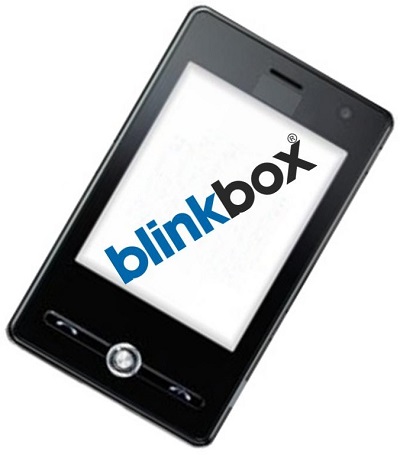Large companies typically lead the way with tech, but mobile commerce platforms are being pushed by SMBs.
Corporations and massive enterprises have traditionally been the leaders when it comes to being on the very cutting edge of technology, but when it comes to mcommerce, a major push is being supported by small and medium sized businesses that are not held back by the solid infrastructures and red tape restricting their larger counterparts.
This flexibility and agility of SMBs makes it possible for them to test and evolve with mobile commerce.
SMBs often find themselves in a position in which they can move quickly, making it possible for them to try out various forms of tech, such as mcommerce, and to keep up with the latest developments over these channels. Because of this, businesses in this size group are starting to play an important role in driving innovation of shopping and payments through the use of smartphones.
Studies are showing that a large percentage of SMBs are using mcommerce and mobile payments.
 Recent research by BIA/Kelsey determined that approximately 40 percent of SMBs are using mobile point of sale (mPOS) technology. These mobile devices are used in store to help consumers to make purchases outside of a traditional checkout counter. It is predicted that this number will only rise as SMBs spend more money on mobility over the next half decade.
Recent research by BIA/Kelsey determined that approximately 40 percent of SMBs are using mobile point of sale (mPOS) technology. These mobile devices are used in store to help consumers to make purchases outside of a traditional checkout counter. It is predicted that this number will only rise as SMBs spend more money on mobility over the next half decade.
Using smartphones and tablets to assist consumers with shopping and to be able to accept both orders and payments can help to simplify the operation of the business as a whole, particularly for small retailers and mom and pop shops. A growing number of analysts are predicting that throughout 2014, there will be a broadening trend of embracing this tech in many forms.
The more mcommerce technology is used, the more rapidly mobile commerce platforms will evolve as innovations are developed to improve convenience, efficiency, and cost effectiveness. This will help in areas including inventory, paperless inventory, online banking, and m-payments that give these entrepreneurs new and innovative ways to use digital means for transacting business. Overall, this is an appealing playing field for the SMB community.
The video streaming service saw a tremendous increase in its smartphone and tablet based revenues.
Throughout the holiday shopping season, Blinkbox – a video streaming service owned by Tesco – experienced a massive increase in its mobile commerce sales, to the point that they were considerably greater than their overall online sales.
The company reports that its sales through smartphones and tablets increased by a massive 674 percent.
That said, including its mobile commerce sales they saw an overall year over year increase in their revenues over the same period ( November 25 through January 5) of 245 percent, when taking all channels into consideration. That said, the increase specifically over mobile devices reflects both effective marketing by the company and rapidly growing interest in these gadgets by consumers, when it comes to consuming streaming video content.
Within the mobile commerce sales category at Blinkbox, it was tablets that truly led the way.
 As a result of an impressive mobile marketing plan by the company, the largest growth in sales figures was by far over this channel. That said, it was tablets – including the Hudle devices from Tesco, itself – that truly produced the largest share of results. In the three months that led up to Christmas, the company managed to sell 400,000 of their own tablet devices.
As a result of an impressive mobile marketing plan by the company, the largest growth in sales figures was by far over this channel. That said, it was tablets – including the Hudle devices from Tesco, itself – that truly produced the largest share of results. In the three months that led up to Christmas, the company managed to sell 400,000 of their own tablet devices.
Those tablets are sold preloaded with the Blinkbox app. That mobile marketing strategy was certain to have played an important role not only in the number of sales that occurred over mobile devices as a whole, but particularly over tablets. Clearly it was a highly effective strategy, considering the totals that the company was able to achieve during that period.
During that span of time, a very impressive 65 percent of the mobile commerce sales that came in for the Blinkbox video streaming services originated from devices other than laptop and desktop computers. This includes connected TVs, game consoles, set top boxes, and other types of connected device, in addition to tablets and smartphones, of course. This channel has clearly proven itself for the company and it will be interesting to see what direction it chooses to take in order to encourage this growth to continue.
 Recent research by BIA/Kelsey determined that approximately 40 percent of SMBs are using mobile point of sale (mPOS) technology. These mobile devices are used in store to help consumers to make purchases outside of a traditional checkout counter. It is predicted that this number will only rise as SMBs spend more money on mobility over the next half decade.
Recent research by BIA/Kelsey determined that approximately 40 percent of SMBs are using mobile point of sale (mPOS) technology. These mobile devices are used in store to help consumers to make purchases outside of a traditional checkout counter. It is predicted that this number will only rise as SMBs spend more money on mobility over the next half decade.
 As a result of an impressive mobile marketing plan by the company, the largest growth in sales figures was by far over this channel. That said, it was tablets – including the Hudle devices from Tesco, itself – that truly produced the largest share of results. In the three months that led up to Christmas, the company managed to sell 400,000 of their own tablet devices.
As a result of an impressive mobile marketing plan by the company, the largest growth in sales figures was by far over this channel. That said, it was tablets – including the Hudle devices from Tesco, itself – that truly produced the largest share of results. In the three months that led up to Christmas, the company managed to sell 400,000 of their own tablet devices.